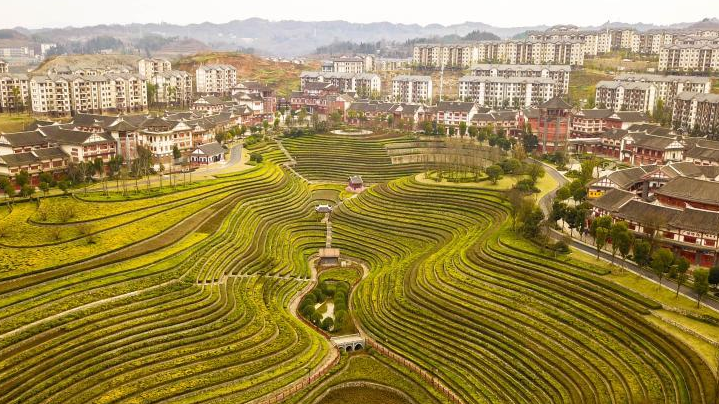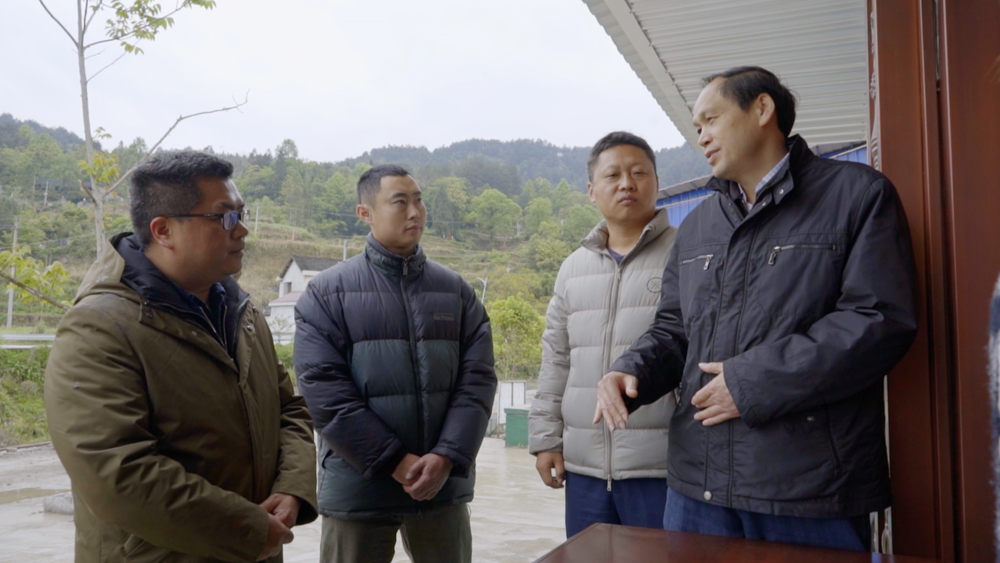
A newly built community for poverty alleviation relocation at ancient Shexiang Town of Dafang County, southwest China's Guizhou Province, December 24, 2020. /Xinhua
A newly built community for poverty alleviation relocation at ancient Shexiang Town of Dafang County, southwest China's Guizhou Province, December 24, 2020. /Xinhua
Editor's note: Timothy Kerswell is a research fellow at the Chinese University of Hong Kong (Shenzhen). He lived in Macao for seven years, working as an assistant professor at the University of Macau. The article reflects the author's opinions and not necessarily the views of CGTN.
In a speech at the Great Hall of the People, President Xi presided over a national commendation conference marking China's triumph over absolute poverty. This ceremony honored some significant role models, but equally important, it acknowledged the collective effort of China's government and its people in accomplishing this momentous task.
President Xi emphasized the role that China's poor have played in the poverty eradication process. With the government providing the appropriate structure and leadership for poverty eradication, it could unlock the impetus of ordinary people to mobilize their creativity and resources to address poverty based on their local conditions.
Significant in China's poverty eradication has been the unified response from all levels of government to devote serious resources to tackling this issue. In the past eight years, it is estimated that China allocated about $250 billion in fiscal resources to the poverty issue. Demonstrating a commitment to addressing inequality, it is notable that the governments of nine of China's wealthier eastern provinces and numerous enterprises from these provinces invested their own resources solving poverty problems in some of China's poorer regions.
Failures of governance in the face of the COVID-19 pandemic and climate change are being scrutinized all over the world including in some of its richest countries. By contrast, China has again demonstrated the resilience and legitimacy of its governance structure in tackling the most serious problems.
The final stages of China's poverty eradication occurred in the heavy headwinds of COVID-19 and all of the economic disruption this has caused in both China and the world. China had an adequate excuse to abandon its anti-poverty goal for 2020, especially as noted by UN Secretary-General Antonio Guterres that "For the first time in 30 years, poverty is rising." It would have been tempting for the government to be satisfied with the status quo as being better than what the rest of the world was doing. It was in this situation that President Xi reminded officials in China that poverty eradication was a solemn promise made by the Communist Party of China Central Committee, which needed to be delivered on time.

Villagers talk to an official from the Ministry of Agriculture and Rural Affairs, in Yongshun County, central China's Hunan Province. /CMG
Villagers talk to an official from the Ministry of Agriculture and Rural Affairs, in Yongshun County, central China's Hunan Province. /CMG
An important component of China's poverty eradication program is its ability to specify clear goals for its policy framework. Addressing the "two worries" (inadequate food and healthcare) and promoting the "three guarantees" (healthcare, education and housing) enabled China to mobilize resources toward priority areas. China's conceptualization of poverty evolved and the threshold of poverty rose along with China's development, thus upgrading the standard of living even for the most vulnerable sections of society. The hard work, the hard science and the benefits of poverty eradication compare favorably to vague concepts like universal rights which are divorced from people's material needs.
The sheer scale of the poverty eradication effort draws attention to the significance of this accomplishment. Of every 10 people in the world to escape the World Bank's definition of absolute poverty in the last 40 years, seven have been from China. "To achieve this goal, China has to lift 10 million people out of poverty every year," said Eduardo Regalado, senior researcher at Cuba's International Policy Research Center. "That is, around 20 people every minute."
Sometimes due to the scale of these achievements, it's possible to overlook some of the finer details of which there are many. This week's ceremony addressed this by highlighting some individual inspirational efforts of leading anti-poverty figures in China. Some like agricultural researcher Zhao Yafu or teacher Zhang Guimei spent 40 or more years, their life's work, teaching planting techniques to villagers or teaching and encouraging young women to pursue higher education. Today's ceremony was also about commemorating these heroes.
China's accomplishments in poverty eradication are also good for humankind. The Chinese government's success in eradicating poverty now puts pressure on governments around the world to do the same, and make poverty eradication a priority. This gives new impetus for the international community to take the United Nations 2030 Agenda for Sustainable Development goals seriously. If China can achieve these goals 10 years in advance, surely the rest of the world by following its positive example can imagine the end of absolute poverty by 2030.
(If you want to contribute and have specific expertise, please contact us at opinions@cgtn.com.)

